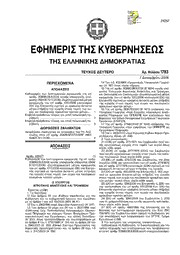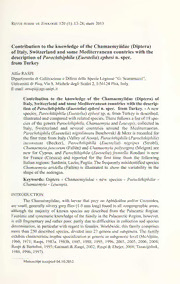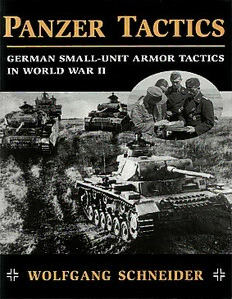
Panzer Tactics: German Small-Unit Armor Tactics in World War II PDF
Preview Panzer Tactics: German Small-Unit Armor Tactics in World War II
PANZER TACTICS GERMAN SMALL-UNIT ARMOR TACTICS IN WORLD WAR II WOLFGANG SCHNEIDER STACKPOLE BOOKS o 11557 03244 4 i Copyright© 2000 byJ.J. FedorowiczPublishing, Inc. Published in 2005 by STACKPOLE BOOKS 5067 RitterRoad Mechanicsburg, PA17055 www.stackpolebooks.com All rights reserved, includingthe rightto reproduce this bookorportions thereofin anyform orby any means, electronic or mechanical, including photocopying, recording, or by any information storage and retrieval system, withoutpermission inwritingfrom the publisher. All inquiries should be addressed toJ.J. FedorowiczPublishing, Inc., 104BrowningBoulevard,Winnipeg, MB, R3KOL7, Canada. wwwjjfpub.mb.ca Printed in the United StatesofAmerica 10 9 8 7 6 5 4 3 2 1 FIRSTEDITION LibraryofCongress Cataloging-in-PublicationData Schneider,Wolfgang, Oberleutnant. [PanzertaktikEnglish] Panzertactics: German small-unitarmor tactics inWorldWarII/WolfgangSchneider.-1sted. p.cm. ISB -13: 978-0-8117-3244-4 ISBN-I0: 0-8117-3244-4 1. Tankwarfare. 2. Tanks (Militaryscience)-Germany. 3.WorldWar, 1939-1945-Tankwarfare. I. Title. UG446.5.S32825613 2005 940.54'1343-dc22 2005012301 TABLE OF CONTENTS Publishers'Acknowledgements iv Editors'Notes v Introduction vi CHAPTER 1: Offensive Operations (DerAngriff) 1 CHAPTER 2: Defensive Operations (Die Verteidigung) 63 CHAPTER 3: Unit Movements (Der Marsch) 93 CHAPTER 4: Reconnaissance (Die Aufklarung) 137 0 ••••••••••••• CHAPTER5: Command and Control (Die Fiihrung) 177 0 •••• CHAPTER 6: Logistics and Maintenace (Die Logistik und Instandsetzung) 205 CHAPTER 7: CombinedArms Operations (Die Zusammenarbeit) 243 CHAPTER8: Life in a Tank (Das Leben im Panzer) 291 CHAPTER9: Training and Tank Gunnery (Die Ausbildung und das PanzerschieBen) 323 CHAPTER 10: Armor Tactics-Today and Tomorrow (Panzertaktik-heute und morgen) 349 °•••••••••••••••••• III PUBLISHERS' ACKNOWLEDGEMENTS Special thanks to Fred Steinhardtfor his excel with kind words of praise and encouragement. It lentworkin translating the textfrom the orig gives us the impetus tocontinue translatingthebest inal German. available German-language books and produce We are also grateful to the indefatigableJean original titles. Our catalog ofbooks can be viewed Restayn and Karl-Heinz Munch for providing many on ourwebsiteatwwwJjfpub.mb.ca. photographswhichenrichedthe textentriesimmea We look forward to your continued comments sureably. and constructive criticism. We also wish to thankyou, the reader, for pur chasingthisbookandallofyouwho havewritten us John Fedorowicz, Mike Oliveand BobEdwards iv EDITORS' NOTES I n general, where the author uses the present alreadyhave a basicunderstandingofGerman rank tense, he means thatthearmortacticsdescribed terms and the terminology used for vehicles, we are still in use with the modern day German have likewise not included anyseparate annexes to Panzertruppe. Ifsomethingis described in the past the bookto explain them. tense, then that activity only took place during WorldWarII. J.J. FedorowiczPublishing Toavoid confusion and unless notedotherwise, the term "operational" in this book refers to the operations/activities ofunits at the small-unitlevel. J.J. FedorowiczPublishing'have a well earned repu Itdoesnotreferto operationsata levelbetween the tation fQr publishing exceptionally high-quality smallunit (tactical) and the theater (strategic). Divi booksonGermanWorldWarIIsubjects,andPanzer sion or corps operations are generally referred to Tactics is a prime example. I've been a huge fan of specificallyin such terms. theirbooksforyears, andsoIjumpedatthe chance Modern American Army terminology is gener to introduce this book to a whole new audience of allyusedwhereveran equivalentterm is applicable. readers in an attractive andveryaffordable edition. In cases where there may be nuances where we Thosefamiliarwith the originalwill note thatsome think the reader might enjoylearning the German changes have been made due to the exigencies of term,we have includeditparenthetically. publishingin a newformat, butalways with a mind In cases where the German term is commonly to maintaining the same high standards to create a understood or there is no good, direct English comprehensive photographic survey and detailed equivalent, we have tended to retain the German historical record ofGerman tankwarfare. term, e.g., Schwerpunkt (pointofmain effort),Auf tragstaktik (mission-type orders) etc. Since mostof ChrisEvans the terms are repeated several times, we have not HistoryEditor includeda glossary. Sincewe assume the readerwill StackpoleBooks v INTRODUCTION A everyone knows, theoryand practice do not The reasons for the gaps in the literature are always coincide. That is exactly how it was manifold. The interested reader usually wants an with the Germanphilosophyoftheemploy overviewofa battleora militarytheaterwithoutget ment of armored formations in World War II. ting lost in the details ofindividual fighting. Also, Although Germany was well ahead of all other most of the war literature inevitably comes from armies in the fundamentals ofcommitment and in generals, some ofwhom have no knowledge at all the art ofoperational command from the mid-thir regardingsituationssofar under them. ties,within theWehrmachttherewereabundantvio An additional aspect is that operational com lations of those fundamentals when it came to mandin action atlowerlevelsis, in part, more diffi putting them into practice on the operational and cult than that of the larger formations, which an tactical levels. Thus a study of German armored intelligent general staff officer can learn in a few operationscannothave the goalofdocumentingthe yearsofongoingtraining, regardlessofwhatbranch many violations of principle. Instead, I intend to of service he belongs to. Command skills at the make clear how the German fundamentals of lower tactical level do not come from theoretical employing armor formations differ from those of studies or sheer talent. One has to work longyears other nations even to the present day. Those tacti at all levels to gain that experience. Itwas no acci callyeffectivedoctrineswereone oftheultimate rea dent that, by the end of the war, officers ranging sons for the success of German troops on a local from the levelofdivisionalcommand to thatofcom leveluntil the finalweeksofthewar. manding general of an army corps were predomi The technicalliteratureincludescountlesscom nately men who had started the war as small-unit petent presentations at the level of operational/ commanders and risen through command ofsmall strategic command (army and higher). That also formations to command oflarge organizations. In holds true at the tactical/operational level ofarmy the process, reserve officerswerein the majority. corps and division. Totally underrepresented are By using the classical weapon employed at factually correct descriptions of the level of com the point ofmain effort (Schwerpunktwaffe)-the mand thatbears the actual burden and rigor ofthe armorformation-I will familiarize the readerwith battle, thatofthe regiment-generally, the brigade the different types of operational roles and other in modern usage-and the battalion. With appro missions thatexistduring operations. priate reinforcementsfor combatand employment, Rightat the beginning, an essentialfundamen they generally form the heart of the operation in tal principle must be taken to heart: tanks achieve that they become the battle groups (Kampfgrup their success primarilyand predominately through pen) orcombatformations, frequentlyapproaching offensive action. That is true whether the tactical/ divisional strength. operational situation is offensive or defensive. As a vi Introduction Vll ThePantherofSS-ObersturmfiihrerNikolussi-Leckcoverstheadvanceofdismountedinfantryduringthefighting forKowelfrom 24Marchto 15May1944.Inthispicture,takenon27March 1944at 1530hours, thetanksbeginto assemble,accompaniedbytheinfantry.Acombinedarmsteam,preferablywithPanzergrenadiere,wasthekeyto successinmechanizedcombat. viii PANZER TACTICS Asthewardeveloped,parade-ground-likeformationswouldbetheexception,ratherthantheruleunderthethreat ofAlliedairpower. commander of armies von Manstein masterfully individual riflemen. There is always great disillu demonstratedhowGermanarmorformations could sionmentwhen the tankformation, stressedbeyond achieve remarkable successeswhen theywere com its capabilities, suffers hair-raisinglosses. Itis hardly mittedin (counter-) attacks, evenwithin the context surprising to hearin manycircles that the tank has ofoverall retreat. become obsoleteas an effective combatweapon. The tank, therefore, must constantly remain Such conclusions fail to recognize that it is the sword in the hand of the tactical commander. always necessaryto employthe bestweapon for the He must use it offensively against the enemy, even intended objective at the correct time and commit in hopeless situations. Ifhe forgoes this advantage itin terrain thatdoes notgranttheenemyanadvan bycommitting tanks to stationarypositions or, even tage before the operation even begins. The troop worse, digs them in and allows them to degenerate leader must continuously attend to the prerequi into a direct-supportweapon for the infantry, then sites for the operation, not only through choice of he is like a knight ofoldwho has been reduced to terrain and correcttiming, butalso through proper the dubious protection ofhis shield. The initiative force ratios and effective combat support, particu an armor leaderinstinctivelyseeks then passes over larlyfrom the air. to the enemy. The main battle tank (Kampfpanzer) is limited Misunderstandings regarding the combatvalue bytechnical requirementsanddoesnothaveunlim oftanks continuallyarose when theywere assigned ited capabilities (protection against all possible roles beyond their capabilities orwhich they could threats). It requires a precise balance between a onlyperformin quitelimitedfashion. These misun practical level ofprotection, on the one hand, and, derstandingsarosewhen the tankwasconsideredas in the final analysis, thefar moreimportantcapabil the sole ruler of the battlefield. Such high-flown itytofunction againstthe enemy. Thatcombination expectations in turn assume that the tank canwith is the ability to dominate the battlefield. It comes stand any threat, even though an abundance of from thesumofthe tank's capabilitiesandnotfrom such threats maybe directed againstit. In addition over-emphasis on a single characteristic. Onlywhen to direct-fire weapons ofall calibers, there are indi firepower, mobility, protection and command and rect fire systems, mines, obstacles, close-quarters control capability are combined in a balanced combatsystemswith hollow-charge orsimple incen whole can a tankfunction effectivelyasasystemand diary devices and an increasing number ofmissiles be more effective than a systemwhich was notcon thatcan be usedatminimal distancesfrom coverby ceived according to these principles. Otheraspects Introduction lX also contribute to effectiveness, such as good train tions. That knowledge was collected through hours ingofthe crew, a high leveloftechnical reliability, a of discussion with former Panzer soldiers of all large logistical operatingrange etc. ranks, evaluation ofcombatreports and accounts of Itis, in thefinal analysis,futile to arguewhether personalexperiencesalongwith, ofcourse, the per the Tigerorsome other tankwas the bestarmored sonal experience ofthe author as an armor officer fightingvehicle ofthe SecondWorldWar. Themass and leader/commanderin numerous combatexer produced M4Sherman stood no chance in a direct cisesrangingfrom platoonleadership through com engagementwith a Tiger. Nevertheless, itwas a suc mandoftankandantitank (Panzerjager) companies cessfulmodelbecauseitwas technicallyreliable and and, finally, an armorbattalion. was provided to the troops in inexhaustible num In the formation of the post-war German bers. The Soviet T-34 was rugged and did not army-the Bundeswehr-the majorityofthe princi require a high-technology industrial base for its ples ofleadership and employment as practiced in massproduction. the Wehrmacht were adopted wholesale. That was What advantage did the Tiger provide the particularlythe casewith mostofthe officers in the Wehrmachtifthe enemymanufactured 20 tanks to 1950's, and even in the 1960's, many ofwhom had everyTiger thatleft the factory? Itwas "acceptable" previouslyservedin theWehrmacht. for anAmerican crewto "consume" halfa dozen or more Shermans between landing in France and DEVELOPMENTOFGERMANARMOR arrivingatGermany's borders. TACTICS Asuccessfulmainbattle tankthus depends on a Given the great success of German armor forma series offactors. Itwas quite clear that the chances tionsinWorldWarII, itissurprisingthattheforma for survivalfor a tank crewin a Panzerkampfwagen tion of armor units and the doctrine for their IV were significantly lower than in a Tiger. It employment did not proceed in a directly linear would nothave been advantageous to theWehrma and purposeful manner.Just as in other countries, cht if, instead of a Tiger, three or four Panzer the majorityofofficers did notrecognize the prom- kampfwagen IV's had been manufactured. Even the best weapons system must finally bow to quantitative threats. Although produced at considerably more cost, the Panther and Tiger con tributed to delaying the unavoidable end ofthe war. The comments made in the following book are based on two things. First, the content of the regula tionswill be explained. The regulations, however, con tain only the bare essentials and include only general statements about the prac tice-about the "how" of armored operations. By far the greatest por tion of the text consists of Operationalsecurity-apartofwhichincludedthecamouflagingofvehicles-wasessen the knowledge gained that tialtothesurvivalofatankcrew,whetherinoffenseordefense.Herealate-model was directly derived from PanzerIII. Outofcontext,itwouldappeartobeanunsuccessfuljobofcamouflage, actual experience in opera- sinceitwouldlikeamovingtreetotheenemyobserver.
The list of books you might like

Believe Me

The 48 Laws of Power

A Thousand Boy Kisses

The Sweetest Oblivion (Made Book 1)

By Invitation Only: Exclusively Yours Private Party Secret Encounter

NASA Technical Reports Server (NTRS) 20060047794: An Exercise in Technology Prioritization in a Competitive Environment
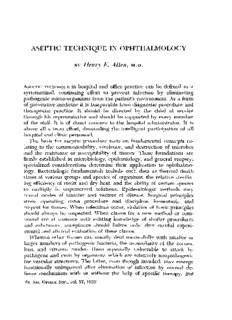
BY Henry F. Allen, MD

The Annotated Big Sleep
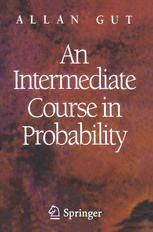
An Intermediate Course in Probability
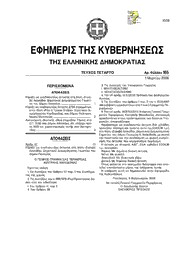
Greek Government Gazette: Part 4, 2006 no. 165
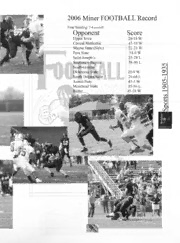
The Rollamo 2006
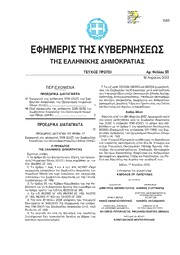
Greek Government Gazette: Part 1, 2013 no. 91

Büyükşehir Belediye Meclisi'nin Değerli Üyeleri

Hewings - Advanced Grammar in Use with Answers 2e HQ

central hudson gas & electric corporation contact voltage testing
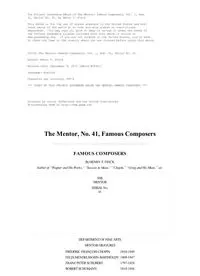
The Mentor No 41 Famous Composers by Henry T Finck

Die Freiheit der Meere und der Künftige Friedensschluß
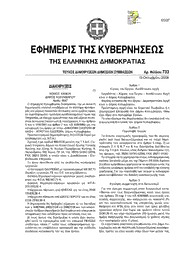
Greek Government Gazette: Part 7, 2006 no. 733
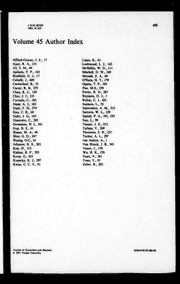
Journal of Economics and Business 1993: Vol 45 Index
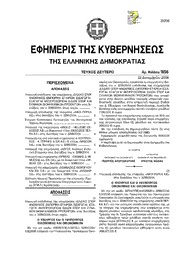
Greek Government Gazette: Part 2, 2006 no. 1856
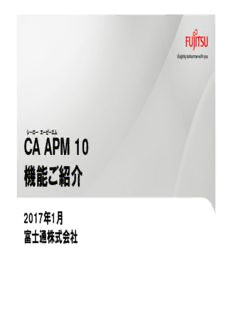
CA APM 10 機能紹介資料
